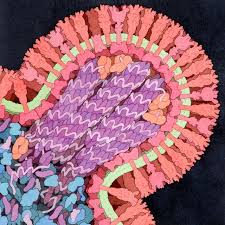Mycoplasma
Mycoplasma is defined as a large group of gram-negative bacteria; they are in the family “mycoplasmataceae” are one-celled with no outer membrane, cell wall. There are seven types known to cause disease in humans, animals and plants.
Mycoplasma Detection and Identification
Most often, mycoplasma is found in the oral cavity on periodontal workup. Also, patients with known compromised immune systems can present with disorders of the central nervous system, chronic fatigue syndrome where lab work indicates low C1-esterase inhibitor; the normal range is between 12-25 mg/dL. Thus, far insiders feel the primary detection is revealed in a lab test called PCR, Polymerase Chain Reaction. They may remain dormant in the oral cavity for an undetermined amount of time, but become active through a dental procedure, failed vaccination or traumatic accident. Replication is possible, and entry into the bloodstream is likely since an outer membrane is absent. Practically, mycoplasma pneumonia is a major cause of sore throat in patients presenting with bronchial symptoms. Additionally, this type of pneumonia can infect lung, CNS, liver and pancreas, and both children and adults.
Presence in Cell Lines
Absence of an outer membrane in mycoplasma, allow for bacteria to actively penetrate white cells of the immune system. Subsequently, bacteria are sheltered from any defense waged by the immune system. Hence, healthy three-dimensional structures may be attacked likely mycobacterial antigens.
Biotherapeutics and Microbiology Service Laboratories
Sources indicate biotherapeutics have been initiated since WWII, and have done more to spread neurosystemic diseases like HIV, rheumatoid arthritis and cancer. This is supported by research from the Armed Forces Institute of Pathology and known medical journals. Currently, lab media cannot readily reproduce mycoplasma. Long-term antibiotic use and the PCA test are standard means for diagnosis and treatment. Service labs using the PCA technique are said to be limited in number.
